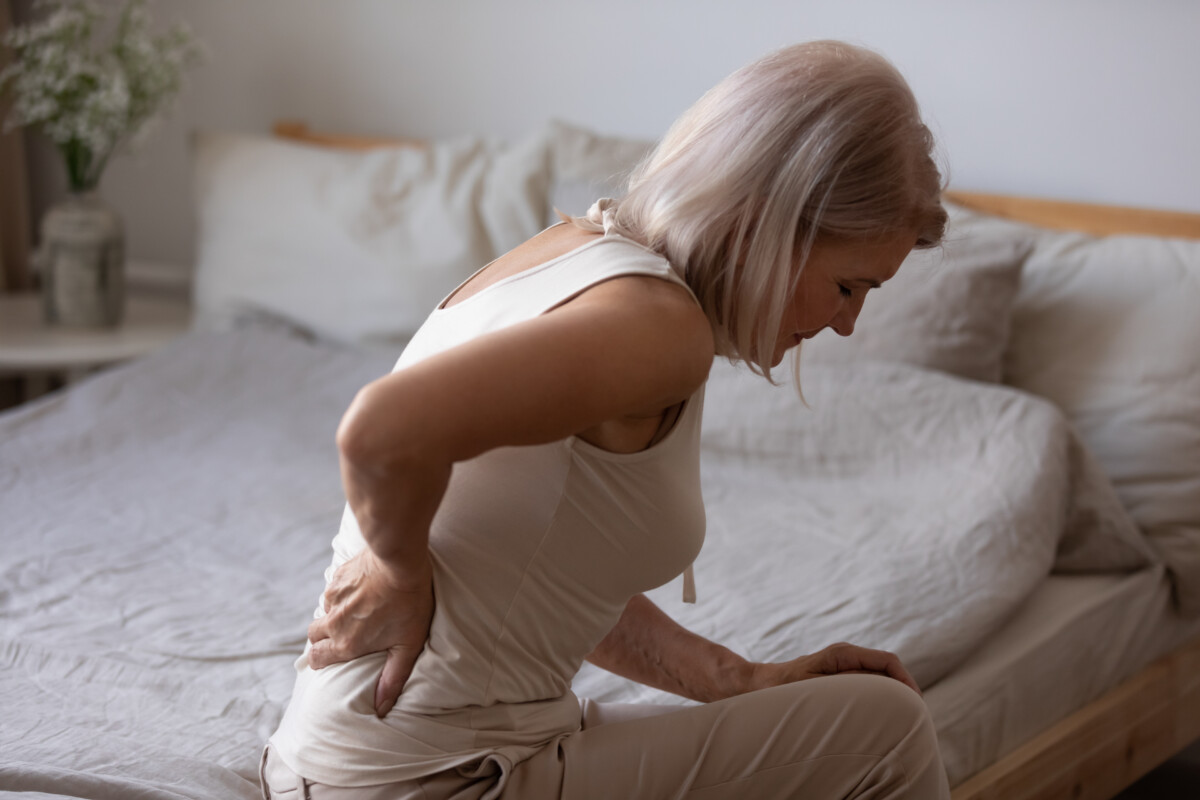“Old Bones” and Osteoporosis

There used to be a saying about people having “old bones” as they aged. It turns out that, for millions of people with osteoporosis, there really is such a thing as “old bones”.
Our bones may have the look of being solid through and through, but this isn’t really the case. As with the rest of our body, our bones are constantly being broken down and replaced with new material. As unbelievable as it sounds, our entire skeleton is replaced about every ten years.
As we age, our bones continue to break down at the same rate but the rate at which material is replaced begins to slow down. As a result, some people wind up losing bone matter faster than they can replace it. When this happens, their bones become weaker and less dense. This condition is known as osteoporosis. Osteoporosis affects 1 in 4 women and 1 in 20 men aged 65 and over.
Why does Osteoporosis matter?
When bones become weaker, they also become more breakable. This means that having a fall is more likely to result in a broken bone. It also means that broken bones will heal more slowly. When bones are more easily broken, falls become much more serious.
As people age, their risk of having a fall goes up. About a fourth of people 65 and older have a fall each year. This is especially bad for women. Not only are they at higher risk for osteoporosis…they are also at higher risk of falling. In fact, about 95% of hip fractures are the result of falls, and about three-quarters of all hip fractures occur in women. 15% to 36% of people with hip fractures die within the first year of having a hip fracture.
Old bones are a serious matter.
Preventing Osteoporosis
If you can’t afford for your car to break down, then you can’t afford to overlook changing the oil and getting maintenance checks. The same goes for osteoporosis. Falls and broken bones aren’t a normal part of life. They happen, but there are things you can do to avoid them.
For everyone
- Poor health habits can have very “expensive” long-term consequences. Smoking, physical inactivity and heavy alcohol consumption increase the risk of osteoporosis. Changing these behaviors isn’t easy, but in the long run healthy habits can give you many additional years of independent active living.
- It’s important to eat a diet that contains all of the nutrients your bones need for healthy growth: calcium, Vitamin D and protein. Eat plenty of dairy, fish, whole grains and leafy green vegetables.
- Weight-bearing exercises help make your bones stronger. This includes walking, dancing, climbing stairs, hiking, tennis, etc.
If you’re older
Get a Screening
There is a simple, fast and noninvasive imaging test called a DEXA scan that is routinely used to diagnose osteoporosis. Talk to your healthcare provider to find out when you should get a DEXA scan. If you have a family history of osteoporosis you may need to be scanned at a younger than normal age. Typical recommendations are for women to have a DEXA scan at age 65 and men at age 70.
Fall Prevention
Fall prevention is a matter of keeping yourself fit and active while maintaining a trip hazard-free environment at home. While the unexpected can always happen, if you remain active you will have better balance and be less likely to fall. If this becomes challenging, ask for help. Physical therapy and/or balance classes can help you move more confidently. Grab bars and railings at home can give you something to lean on. If you’re taking medications that cause dizziness let your healthcare provider know so that, hopefully, you can switch to a different medication. Falls and Fractures in Older Adults: Causes and Prevention | National Institute on Aging (nih.gov)
Treating Osteoporosis
- There are medications to slow the rate at which bone matter breaks down. These medications can help restore the balance between the rate at which bone matter is broken down and the rate at which it is replaced.
- There are medications that can help speed up the rate at which bone matter is replaced.
- There are medications that do both of the above.
- Hormone replacement therapy can help prevent osteoporosis in older women.
Note: These medications have side effects and they do not work quickly. Some of them are only used in very advanced cases. The best “medication” is prevention. Treatment | International Osteoporosis Foundation
